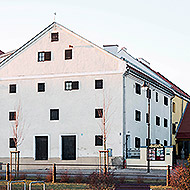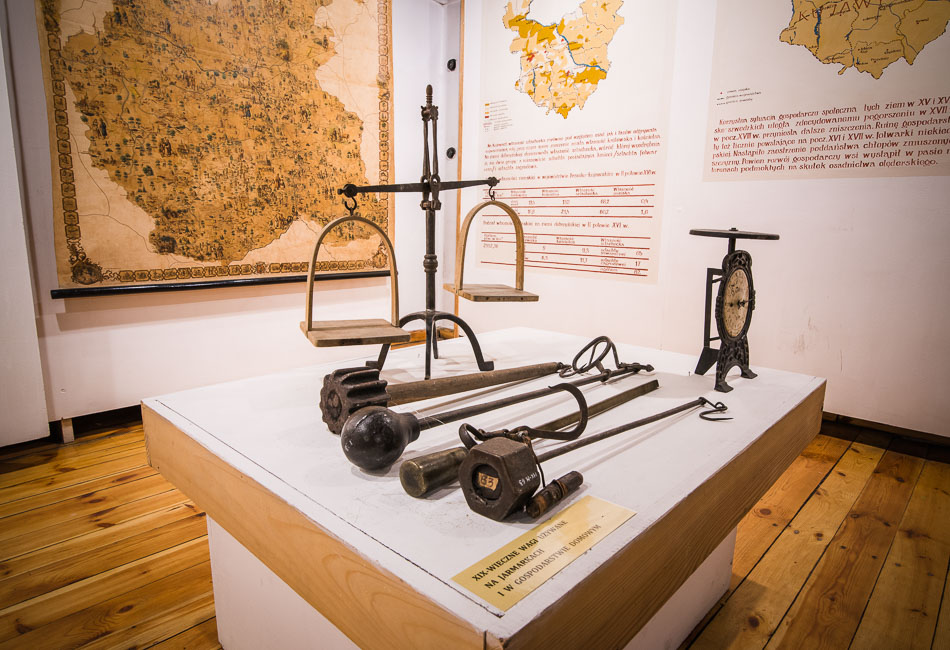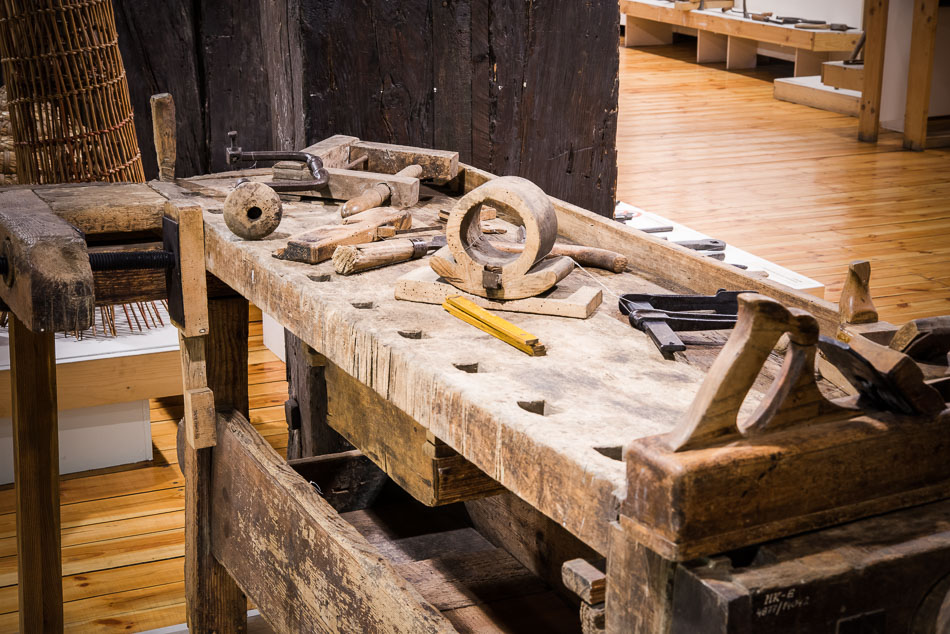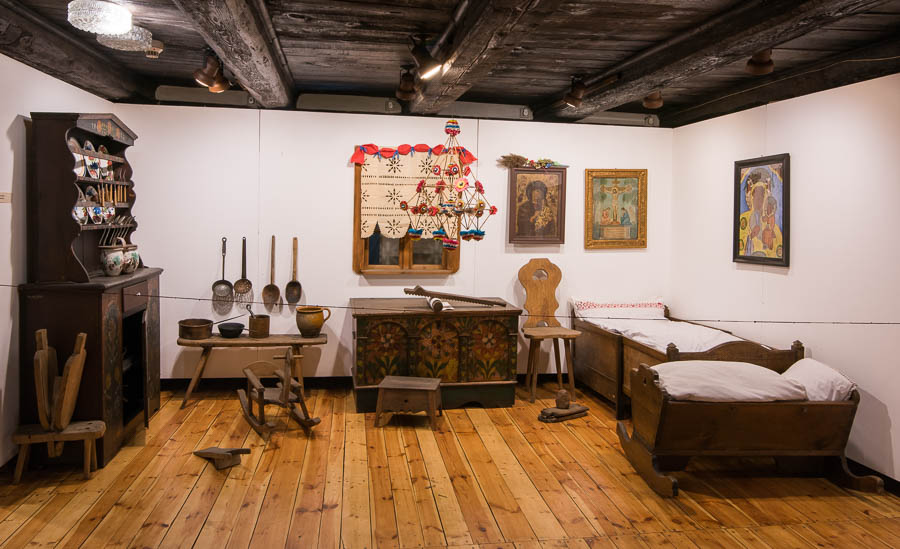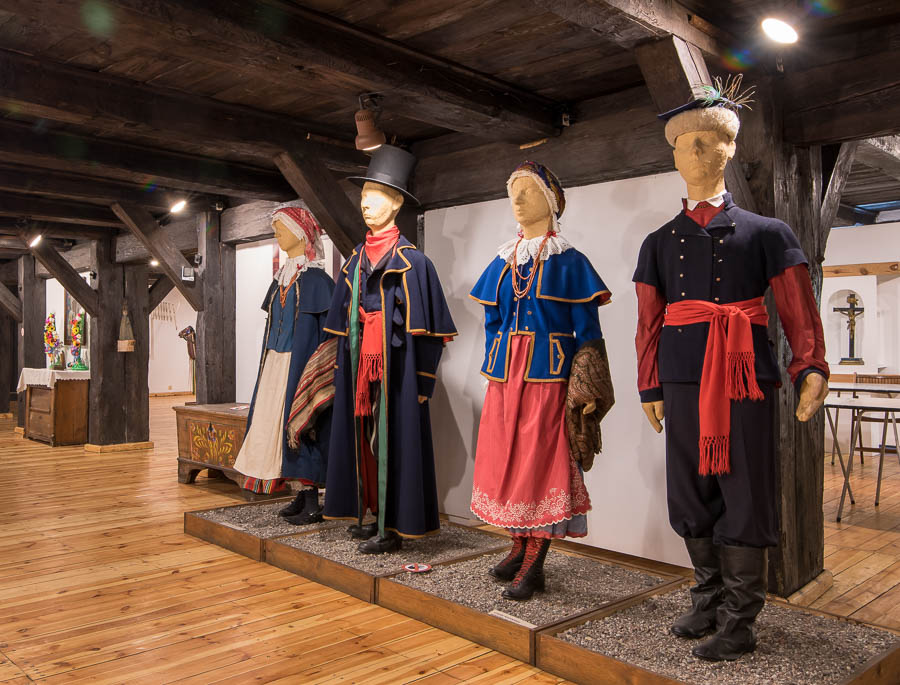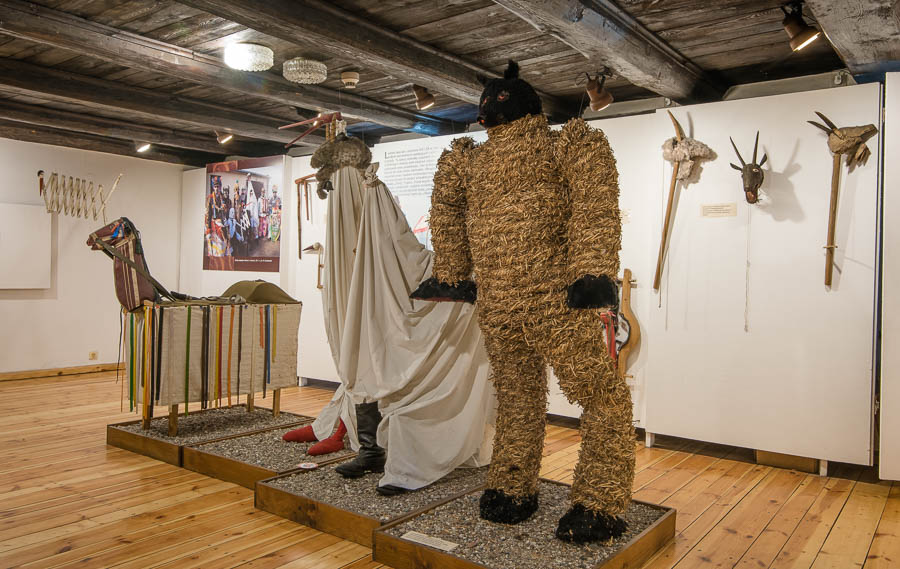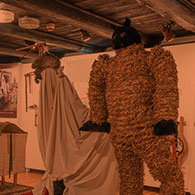The Ethnography Museum
|
|
The residence of the Ethnography Museum is a complex of buildings by Bulwary of Vistula with historic granary raised in 19th century (before 1848), probably of the project of Franciszek Turnelle – the city` architect of those days. Top wall situated to Vistula, granary is representing typical warehouse building of reloading function and it has typical features of classicism. It is fourth floor brick building with two-side roof. To the restored top of the granary, the new part refered to its body was built on in 1980-1985. Previously, there was a wooden granary which burned in 1862. Expositions in Ethnography Museum were provided to visitors in 10th October of 1986. |
|
FOLC CULTURE OF KUJAWY AND DOBRZYN LAND The exhibition occupies three floors of the historic granary. It presents village at the turn of the 19th/20th century and it shows the most important elements of non-existent folc culture. The issues are showned in following order.
Basic economy department, farming, breeding and fishing preceding the introduction to whole exhibition ilustrated by maps, information boards about historical influences on traditional culture of Kujawy and Dobrzyn Land. Main section – farming, presented by tools used for farming works (ploughs, harrows, listers, suede harrows, hand-seeders) and photograms showing cycle of farming works. At the second part of exhibition there are articles connected with breeding, incubation of poultry (baskets, bucks), with house processing industry (feeding trough), with using animals for farming (yoke), and transport (harness). Specificity of both regions, their riverside location and presence of lakes, accenting objects connected with fishing, which was the important way to get food. There is big river boat, nets and snares and fishing bucks. The exhibition is enriched by short texts and photograms thematically connected with presented sections.
In this part, exposition including five main crafts: pottery, blacksmith, cart-wrighting, cooperage, plaiting. In each section there are tools and craft articles, what helps visitors to imagine those days producers. Supplement of it are short texts and photograms of craftsmen at work. The presentation of craft in ending by carpentry showing tools of carpenters by ilustrated construction details. This part is enriched by many slides showned types of buildings and whole farm characteristic for Kujawy and Dobrzyn Land.
Exposition in this part presenting fragments of the equipment of house interior of Kujawy and Dobrzyn. This combination allows to see important differences in the look of furniture characteristic for both regions. Furthermore, there are small house tools connected with food preparation and cleanliness keeping. Both annexes are connected by “house altar”.Huge part of exposition is dedicated to festive folc clothes. There are male and female Kuyavian clothes from 19th century with accent on homespun and typical for region of Kujawy clothes from the turn of 19th/20th century. Whole exposition is replenished by iconographic materials, copies according to sketches of Wojciech Gerson from 19th century which are showing clothes of Kujawy and women`s headdress.
Rich collection of historic folk sculpture is presented, with presentation of Holy Mother Skepska imitated on “miraculous”, gothic figure of Mary from Marian Shrine from Skepe. Thanks to this monuments we have full review of workshops which are existing here and natural artists. Furthermore, there are images of crucified Christ and Saints (St.John of Nepomuk, St.Laurence, Antony of Padua).
The last part of exposition approaching still alived on Kujawy shrovetide customs. There are costumes and properties of dressed up shrovers where leading role had a horse, stork, bear and goat. Replenishment of exposition are musical instruments, typical for folk bands from Kujawy. Some of them (accordion, violin) accompanied to group of shrovers. |
|

 PL
PL

